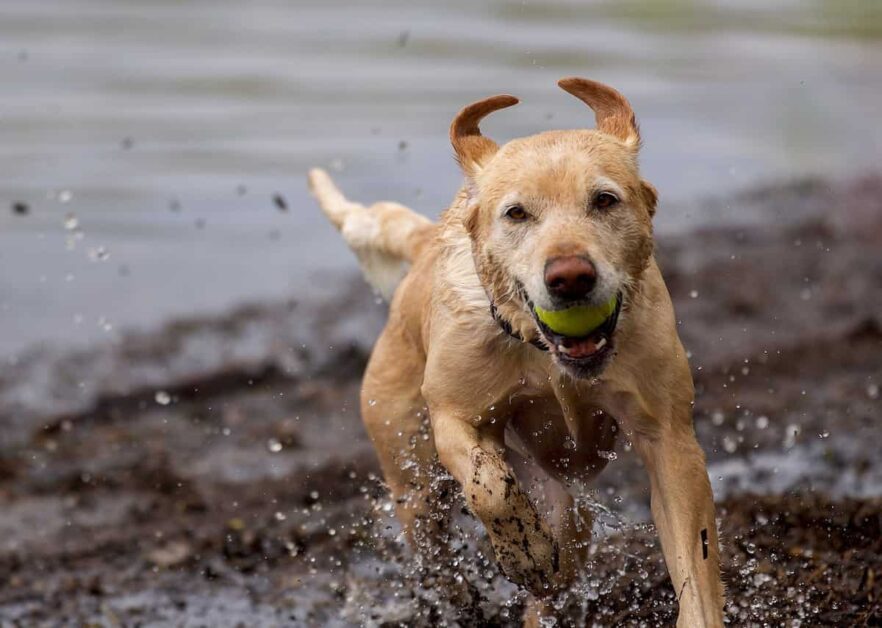Onychectomy is the medical term for declawing a dog. This procedure involves removing the third bone or phalanx of the toe. It is a major surgical procedure that requires multiple amputations. We’ll look at the pros and cons of declawing dogs so you can take an informed decision.
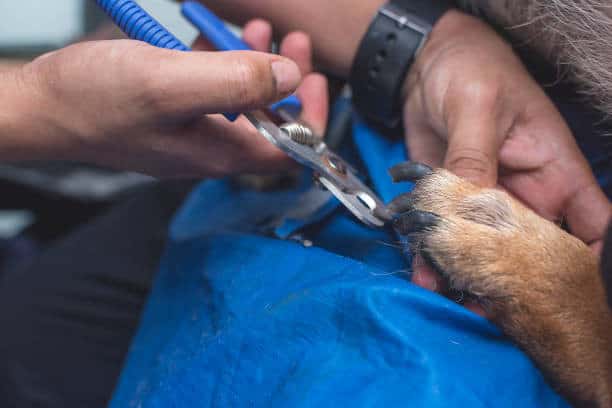
what is declawing a dog?
Declawing cats is a well-known practice. However, when it comes to dogs, we see mixed reactions. The procedure entails removing the last bone of the dog’s toe, similar to a cat.
Removing it ensures the removal of the nail bed. The nail can no longer grow back. There are three primary methods for declawing dogs: laser surgery, scalpel removal, and the guillotine method. These methods all involve amputation. The only difference is the use of different tools.
Pros Of Declawing For Pet Owners
Protection Against Diseases
The main advantage of declawing a dog is it can prevent the spread of nail diseases. Cats are known carriers of various illnesses, such as cat scratch fever. It can be transmitted through dog scratches or bites. If your dog frequently interacts with declawed cats, declawing can reduce the risk of infection and help keep your furry friend healthy.
No Pain Afterwards
Another advantage of declawing dogs is there is no pain afterward. It is because a dog’s claw is not attached to the bone, unlike in humans. It is a relatively simple procedure that causes minimal pain and discomfort to your dog. Many declawed dogs can resume normal activities within a few days of the surgery.
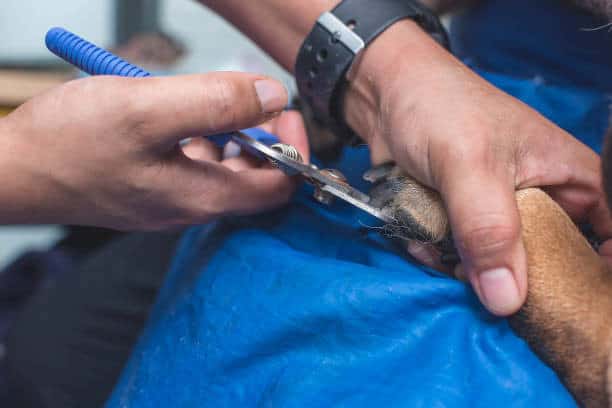
No Allergies
Declawing your dog can be beneficial if you or a member of your household suffers from allergies to pet dander. It can aid in reducing the symptoms of an allergy or asthma attack. Paws contain tiny particles of dander. It can quickly spread throughout your home and trigger allergies. Removing the claws can minimize the dander your dog sheds. It will make your living space more comfortable.
Safer
Another benefit of declawing is it can make your dog safer to be around. Paws can be dangerous if your dog accidentally scratches someone, especially children or elderly individuals. Removing the claws can prevent these accidents and avoid potential lawsuits or legal issues.
Stops Scratching Damage To Furniture
One common reason pet owners declaw their dogs is to prevent them from scratching furniture. This behavior is destructive. It can be expensive to repair or replace damaged items. Removing the claws can prevent your dog from causing further damage.
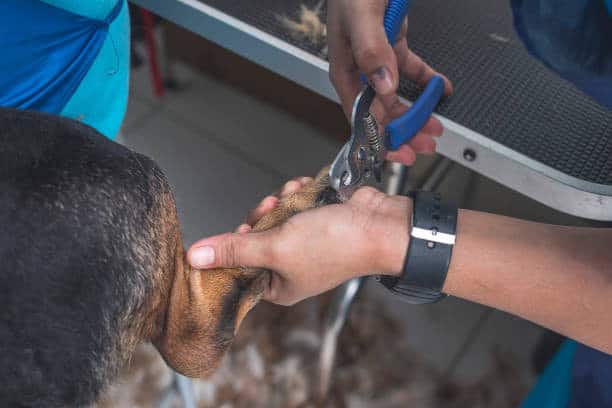
Cons
Side Effects
One of the main cons of declawing dogs is the potential for side effects. It can lead to several immediate postoperative complications, including:
Infection:
Declawing can lead to a higher risk of infection, as the wound can easily become contaminated with bacteria.
Bleeding:
The procedure can result in excessive bleeding, which can be challenging to control.
Nerve Damage:
The removal can damage the paw’s nerves. The amputated nerves lead to long-term pain and discomfort.
Behavioral Changes:
Many dogs experience behavior modification after being declawed, such as aggression, depression, and anxiety.
Balance Issues:
Declawing weakens the leg, shoulder, and back muscles gradually, making it challenging to maintain balance. Dogs that have undergone declawing need to relearn how to walk.
Painful Procedure
Declawing is painful and traumatic for most dogs. Even with anesthesia, the procedure can cause intense pain during and after the surgery. In addition, a dog declawed may require pain medication for several weeks or a few months to manage its discomfort.
Moreover, the healing process can take up to two weeks, during which dogs must avoid physical activity. It can cause further stress and discomfort for the dog and its owner.
Phantom Pain
Another major con of declawing dogs is the potential for phantom pain. Phantom pain occurs when the brain signals pain signals to the removed dog’s body part. It can lead to chronic pain and discomfort for dogs, affecting their quality of life.
Alternatives to Declawing for dog’s nails
Fortunately, there are alternatives to declawing to prevent damage to your expensive furniture.
Scratching Posts:
Providing your dog with scratching posts can give them an appropriate place to scratch. They won’t scratch furniture and keep their claws healthy.
Nail Trimming:
Simple nail trimming can keep your dog’s claws from becoming too long and sharp.
Soft Paws:
You can place soft paw caps over your dog’s claws to prevent scratching. When walking on rough terrain, soft paw pads offer protection. The paw pads help to prevent any potential injuries.
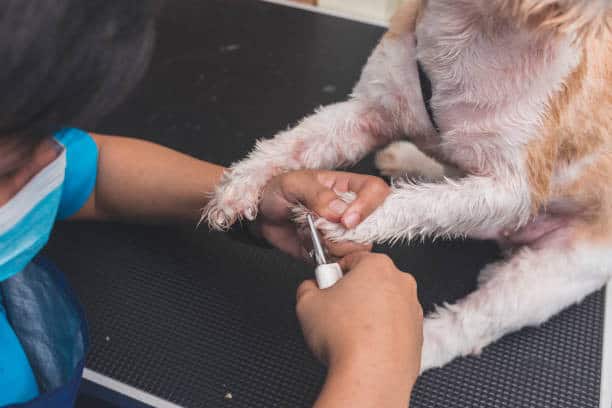
Signs That Show Your Dog Needs Declawing dogs
Let us discuss the signs that indicate your dog may require declawing.
Aggressive Behavior
Aggressive behavior is a significant indicator that your dog needs declawing. Dogs or cats with sharp claws can easily hurt other animals or humans. If your dog has a history of aggressive behavior or is prone to biting, declawing can help prevent future problems. Declawing does not guarantee that your dog will not bite. It reduces the risk.
Excessive Scratching
This could be a potential sign if your dog is constantly scratching itself or their surroundings. Dogs or cats that suffer from allergies lick and may scratch themselves excessively. It causes further damage to their skin. Declawing can help alleviate the itching and discomfort.
Medical Conditions
If your dog has a tumor on their paw, declawing may be necessary to remove the affected area. Even if the dog has a history of recurrent infections, declawing may help prevent future occurrences.
Aged Dogs
As dog’s age, their claws may become brittle and prone to breaking, leading to discomfort and pain. Declawing can help alleviate this pain and give your dogs happier lives.
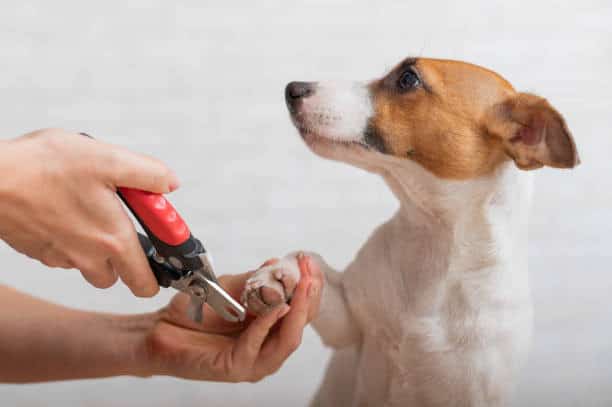
When is Dew Claw Removal Recommended?
They are the small, vestigial claws inside your dog’s front paws. Some dogs even have rear dewclaws on their hind legs, but they are less common. Back in the day, dogs used these claws to grip and climb. However, as they evolved, dew claws were no longer necessary for survival. Many veterinarians recommend removing your dog’s dew claws for these reasons.
Injuries:
Because dew claws are higher up on the leg and not in contact with the ground, they are more prone to injury. Dogs can snag their dew claws on fences or furniture and rip them off, causing pain. Sometimes, it may not be possible to save the claw, which must be surgically removed.
Health Issues:
In some breeds, dew claws can become ingrown or develop tumors, which can cause discomfort. Removing the dewclaw may prevent further health issues.
Grooming:
A dog’s long, curved dewclaws can grow into the paw pad, causing distress. Especially true for breeds and other dogs with thick fur, where the dewclaws become difficult to trim with thick brush. Removing the dewclaws eliminates this issue.
Preventing Future Issues:
At times, dog owners choose to have their dog’s dewclaws removed as a preventative measure. Mostly owners of hunting or working dogs.
Is It Always Necessary?
While there are situations where dewclaw removal may be recommended, it’s not always necessary. Dewclaws that are correctly aligned don’t cause any issues. In these cases, removing the dewclaws would be a simple cosmetic procedure and not benefit the dog.
Remember, a qualified vet should perform the surgery. Declawing involves general anesthesia. It may require some recovery time for your dog to heal fully.
The Dew Claw Removal Procedure
Preoperative Tests
The necessity of preoperative tests depends on the animal’s age, general health, and the cause of removal. Young and healthy puppies usually don’t require preoperative tests. Before declawing surgery, a vet may conduct:
- A complete blood count
- Serum biochemical test
- Urinalysis
- Potentially an EKG in older animals.
Anesthesia
Dewclaw removal is performed on puppies between 2 to 5 days of age without general anesthesia. Medical professionals may use local anesthetic or sedation may in some cases. Sedation or general anesthesia is necessary for older animals. General anesthesia provides complete pain control, muscle relaxation, and unconsciousness.
Surgical Procedure
Before the surgery, veterinarians clean and disinfect the surgery site using surgical soap.
- The dewclaw is usually loosely attached to the paw, making removal relatively simple.
- During the procedure, veterinarians use surgical scissors to quickly remove the digit’s skin, bone, and dog’s nails.
- After removing the skin, veterinarians close the incision using absorbable or non-absorbable sutures. Some use surgical adhesive to seal the wound.
- Non-absorbable sutures require removal in 5 to 7 days.
- Veterinarians may place a bandage over the incision site for 2 to 3 days in older pets.
Professionals may also prescribe some pain medications.
Duration of the Procedure
The declawing procedure usually takes 15 to 30 minutes, including preparation time. Always weigh the pros and cons of declawing dogs before making any decision.
FAQs
Can you declaw a dog to stop digging?
No, declawing a dog is not a solution for stopping digging. It should be a last resort.
Can small dogs be declawed?
Declawing small dogs may be considered if there is a genuine medical reason for the procedure.
how to declaw a dog at home?
It is not recommended to declaw a dog at home, as this is a surgical procedure that a veterinarian should perform under general anesthesia. Declawing a dog is a painful and invasive procedure that can lead to serious complications, such as infection, nerve damage, and chronic pain.
is declawing dogs illegal?
The legality of this issue varies depending on the laws of the specific country or state. In many places, it is illegal.
Is removing dew claws cruel?
Yes, removing dew claws is cruel unless there is a medical necessity. Dewclaws serve several important purposes, including:
- Providing additional support for the leg
- Helping the dog grip uneven surfaces
- Protecting the other toes from injury
Why would you declaw a dog?
Declawing a dog may be considered for medical reasons. However, great veterinarians argue its practice is cosmetic surgery.
At what age can you declaw a puppy?
Typically, veterinarians perform dewclaw removal on puppies between 2-5 days old.
Do vets recommend declawing?
No, vets do not recommend declawing except in rare medical or behavioral cases.
Is it cruel to declaw a dog?
Animal rights groups consider it unethical and cruel. Doctors recommend it when the animal’s suffering can be relieved. Dew claws are frequently removed.
Are declawing alternatives?
Some alternatives include regular nail trimming, using nail caps, providing scratching posts, and training the dog.
How can pet owners put my dog’s nails down naturally?
Natural ways to put your dogs nails down include walking them on concrete or using a nail file designed for dogs.
Author Profile

- In House Labrador Trainer
- Samta is an experienced Labrador trainer and enthusiast with over 5 years of hands-on experience, contributing invaluable insights and advice to Labradorandyou.com. Her deep understanding of Labrador temperament and intelligence underpins her effective training techniques and product recommendations. Through firsthand experience of the joys and challenges of raising Labradors, Samta's articles provide expert advice for both seasoned and new Labrador owners, covering training, care, and innovative product selection. Her commitment to enhancing the well-being of Labradors and their owners permeates her work, making it an indispensable resource for Labrador enthusiasts
Also by the author
-
 FAQNovember 16, 2023Why Is My Dog Pooping So Much? MUST KNOW Facts
FAQNovember 16, 2023Why Is My Dog Pooping So Much? MUST KNOW Facts
-
 FAQNovember 16, 2023Why Is My Dog So Skinny? 9 Reasons With Solutions
FAQNovember 16, 2023Why Is My Dog So Skinny? 9 Reasons With Solutions
-
 Mix-BreedsNovember 16, 2023Straight Haired Labradoodles Complete Guide: All You Need To Know
Mix-BreedsNovember 16, 2023Straight Haired Labradoodles Complete Guide: All You Need To Know
-
 Lab-TypesNovember 6, 2023Block Head Labs: Are They Better And Healthier?
Lab-TypesNovember 6, 2023Block Head Labs: Are They Better And Healthier?
